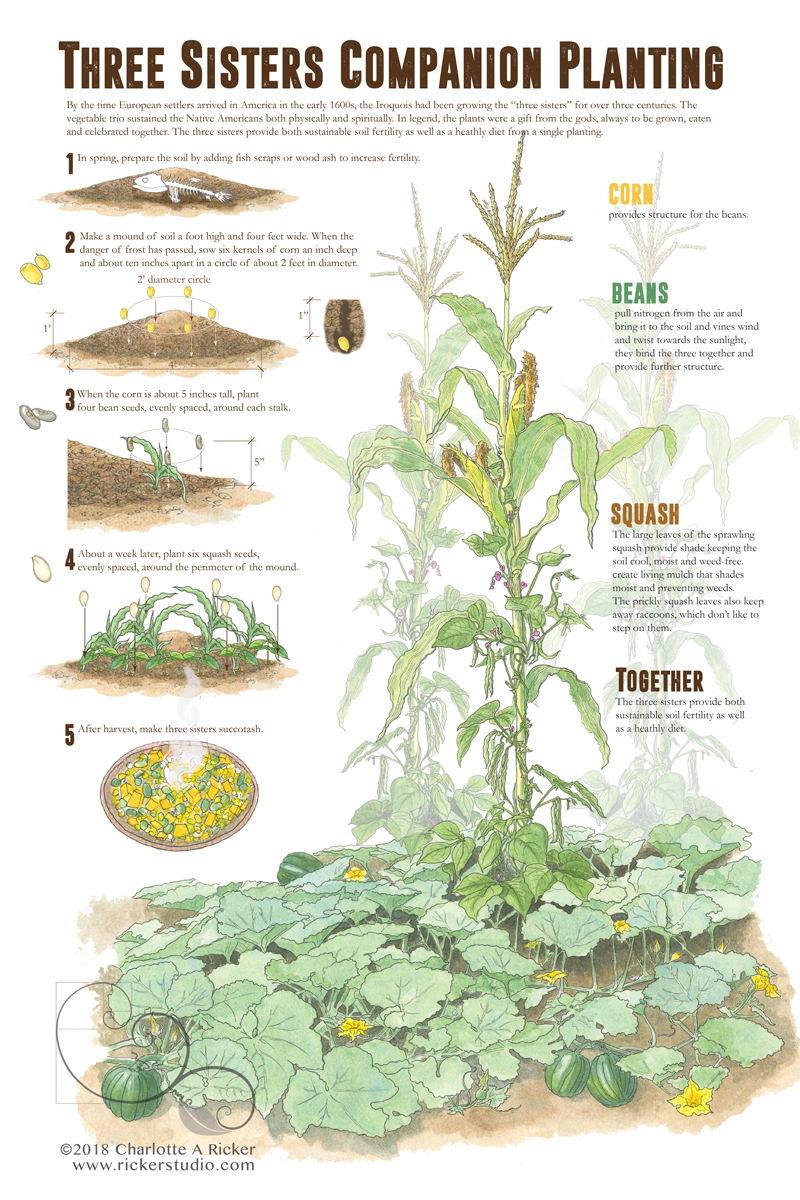Indigenous Fellowship of Hamilton Road

Three Sisters
The three sisters garden is a companion garden and grow together in symbiotic partnership. Each pant supporting each other to deter weeds, enrich the soil and flourish.
By the time European settlers arrived in America in the early 1600s, the Iroquois had been growing the “three sisters” for over three centuries. The vegetable trio sustained the Native Americans both physically and spiritually. In legend, the plants were a gift from the gods, always to be grown together, eaten together, and celebrated together.
Each of the sisters contributes something to the planting. Together, the sisters provide a balanced diet from a single planting.
The older sister is the corn and offers the beans the support to grow upward.
The giving sister is the beans and they pull nitrogen from the air. The nitrogen is needed to enrich the soil and supports growth for all three. The beans wind up the cornstalk and hold all of the sisters together.

Before planting, choose a sunny location (at least 6 hours of full sun every day). This method of planting isn’t based on rows, so think in terms of a small field. Each hill will be about 4 feet wide and 4 feet apart, with 4 to 6 corn plants per hill. Calculate your space with this in mind.
1. In the spring, prepare the soil with plenty of organic matter and weed-free compost. Adjust the soil with fish scraps or wood ash if needed.
2. Make a mound of soil that is about a foot high at its center and 3 to 4 feet wide. The center of the mound should be flat and about 10 inches in diameter. For multiple mounds, space about four feet apart.
3. Plant corn first, once the danger of frost has passed and nighttime temperatures reach 55°F (13°C). Don’t plant any later than June 1 in most areas, since corn requires a long growing season. See local frost dates.
4. Sow six kernels of corn an inch deep in the flat part of the mound, about ten inches apart in a circle of about 2 feet in diameter.
5. Don’t plant the beans and squash until the corn is about 6 inches to 1 foot tall. This ensures that the corn stalks will be strong enough to support the beans. The beans’ role is to fix nitrogen in the soil, which is needed for strong corn production. You can grow several pole bean varieties without worrying about hybrids, but just plant one variety per hill.
6. Once the corn is 6 inches to 1 foot tall, plant four bean seeds, evenly spaced, around each stalk.
7. About a week later, plant six squash seeds, evenly spaced, around the perimeter of the mound. See the spacing for squash on your packet; usually, this is about 18 inches apart. You may wish to put two seeds in each hole to make sure that at least one germinates.
https://www.almanac.com/content/three-sisters-corn-bean-and-squash